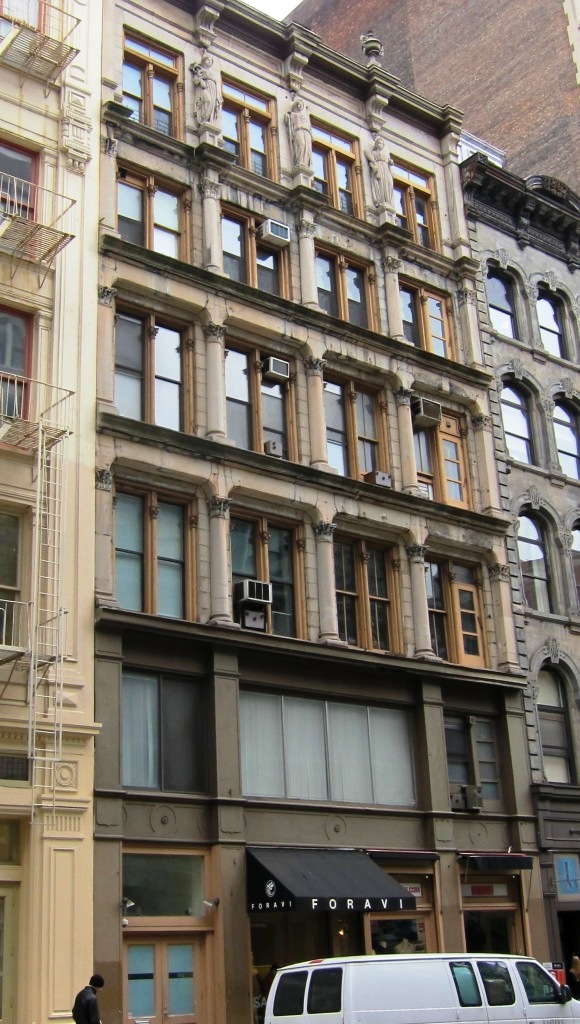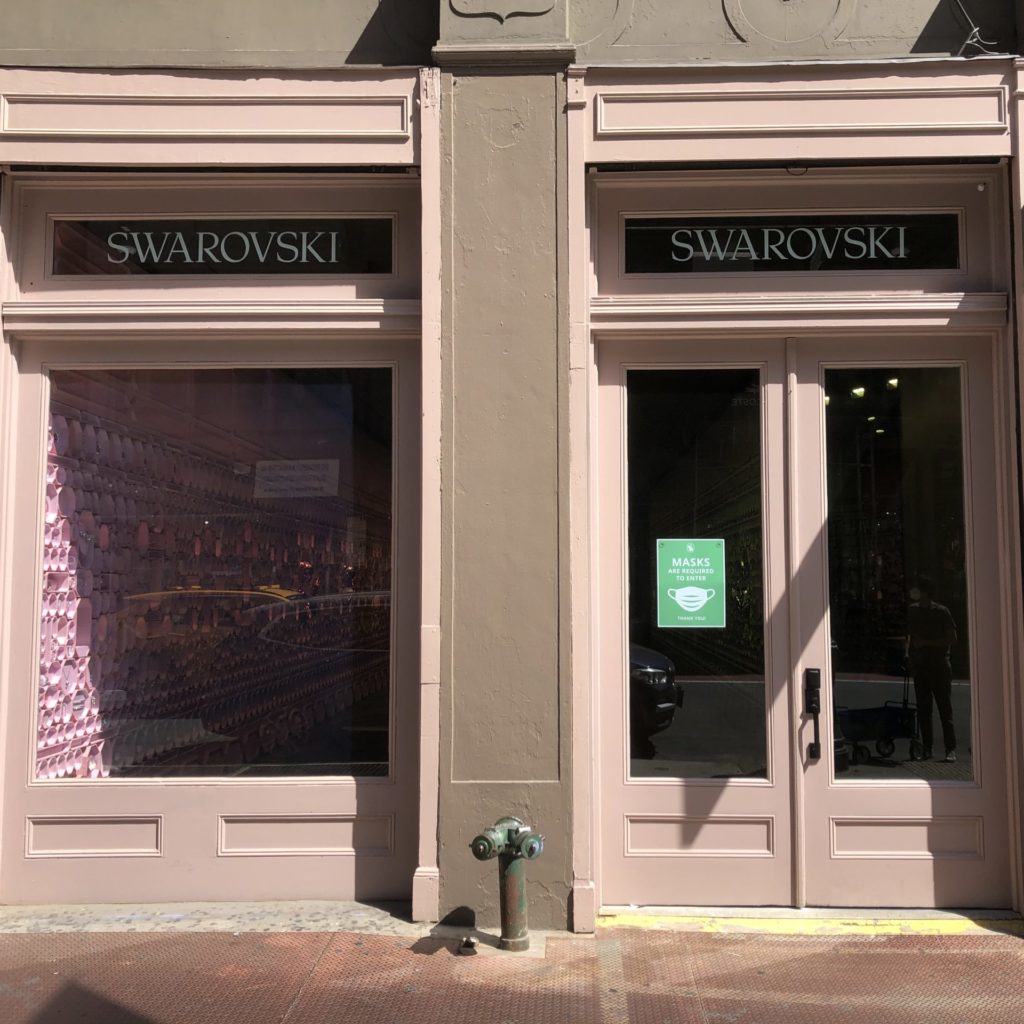During the Civil War, Broadway along what is known as SoHo today was considered one of New York’s most exclusive business districts. Broadway between Spring and Broome was home to the St. Nicholas Hotel, one the most glorious hotels in the world. During this time, more and more commercial buildings were built in the district, defining the commercial nature of the neighborhood with ground-floor retail catering to the wealthy clientele brought in by the hotel.
In 1864, 542-544 Broadway was erected as two buildings between Prince and Spring streets. They were later combined. Per owner Edward Robinson’s request, the architect pulled out all the stops; designing a white marble facade that gleams in the sun, standing tall at six stories high, with Corinthian columns supporting cornices at each level. However, what the building was most known for aesthetically was its notable caryatids, stone carvings of draped female figures often used as pillars to support Greek-style buildings. The three marble statues of Roman goddesses — Panacea, Athena and Ceres — overlooked onto Broadway from the sixth and final story. Their heads do not touch the cornice brackets above them and thus function more as art and aesthetic elements rather than being pillars and supporting the structure like most caryatids.

The building’s first tenants were Hoff’s Malt Extract, known for producing “beverages of health”. In 1882, the ground floor store became home to Near & Gardener, renowned booksellers and stationers. At the same time, the upper floors housed small factories and offices. The American Express Company opened a branch office of its express package service here in 1871 and would stay here beyond the 20th century.
In an unfortunate instance, a devastating blaze broke out in December 1889 at Louis Kaelter’s fur company occupying the 5th floor. Kaelter lost nearly a quarter of a million dollars as a result of the fire, and the firms below suffered from severe water damage.
At the turn of the century, the St. Nicholas Hotel was razed, and commerce moved further uptown. However, the neighborhood was still home to many fashionable businesses. At this time, the ground floor retail space was occupied by Bernard Rice’s Sons, manufacturers and wholesale sellers of jewelry with a factory in Williamsburg, Brooklyn.
At the same time, Bailey Restaurant had opened a branch that shared the ground floor space with Rice’s Brothers. Bailey’s had become a popular chain across Manhattan; however, its move to the classy building at 542 would soon prove to be a mistake. By 1903, the entire chain of restaurants went bankrupt due to the high rent paid for the Broadway location.
As the neighborhood continued to change over time, the upper floors continued to be leased out by dry goods companies. In fact, the building was within what the New York Times deemed to be the “in the center of the dry goods district”.
As the 20th century continued on, Broadway around Spring Street was no longer as stylish as it was in the 1860s, contributing to the foreclosure of the building in 1938. Around this time, the white marble and Corinthian columns were removed from the first two floors, and were replaced with a somewhat pseudo-modern industrial makeover with an iron storefront.

SoHo then actually underwent a period of serious neglect during the mid 20th Century, before being taken notice of for its vast loft spaces with ample light and cheap rents by artists later in the century. Galleries populated cast-iron warehouses and later swanky shops occupied the retail spaces.
In 1981, upper floors of the building were converted into joint live-work work quarters for artists. The space where Rice’s Brothers once sold silver-plated smoke sets is occupied by a Swarovski store today, and chic apartments are in place of dry goods retailers.
Next time you’re in the neighborhood, take a look at the top of the building to catch the three ladies watching over the district – witnesses to 150 years of New York’s history!

Top image credits: Alice Lum via Daytonian in Manhattan Blog